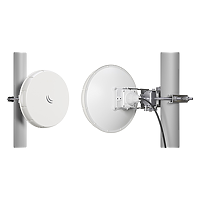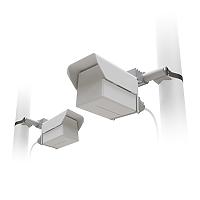no 5g and 4g is poor, part of the reason why ive fitted wireless into most of my sheds as 4g is so slow, so i don't think the "number of hops" as i would just show them the farm, as for them miss using it, they over in my house half the week anyway using it for "school projects" anyway, so if i can get good internet in their house is save me a fortune in food.
it more a speed/bandwidth thing, would a wireless link have enough ?
For the distance you are taking about, a MikroTik 60GHz link would give you a 2Gbps link in clear weather and 600-900Mbps in the rain (which it will be given your location).

Wireless Wire nRAY | MikroTik
The most compact wireless 2 Gb/s aggregate link in the 1500 m range or more! Improved snow-resistant design is perfect for harsh weather environments. Cables can no longer limit you!
Or this option has a 5GHz fallback to about 300Mbps if the weather really goes to heck in a handbasket.

Wireless Wire Cube Pro | MikroTik
A preconfigured kit of two Cube 60Pro ac (802.11ay 60 GHz) devices: the Wireless Wire Cube Pro. Just point the Cubes at one another and power them on! They will form a blazing fast encrypted wireless connection. Pure plug-and-play!
And, as everyone else has already said, DON’T DO IT. It’s a bad idea.

